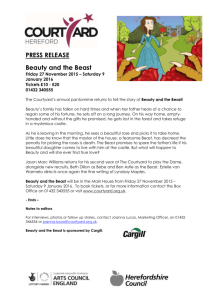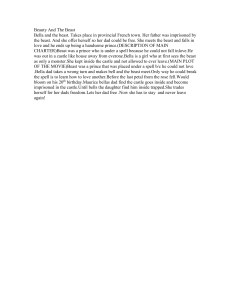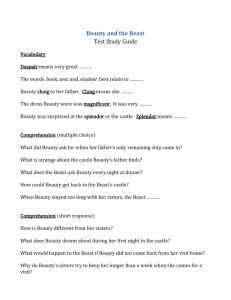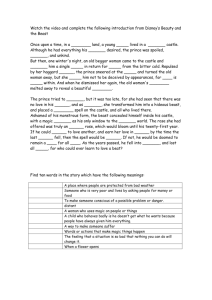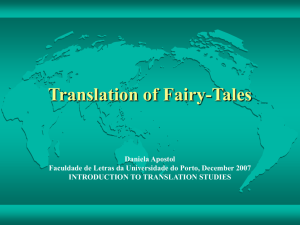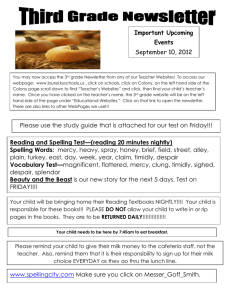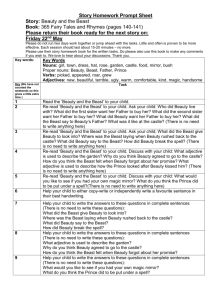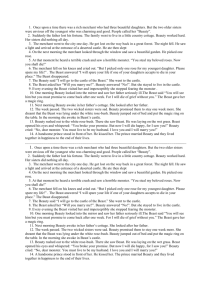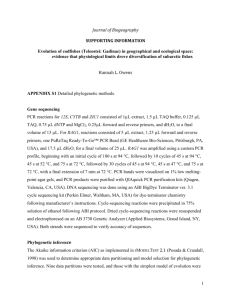Beauty And The Beast II
advertisement
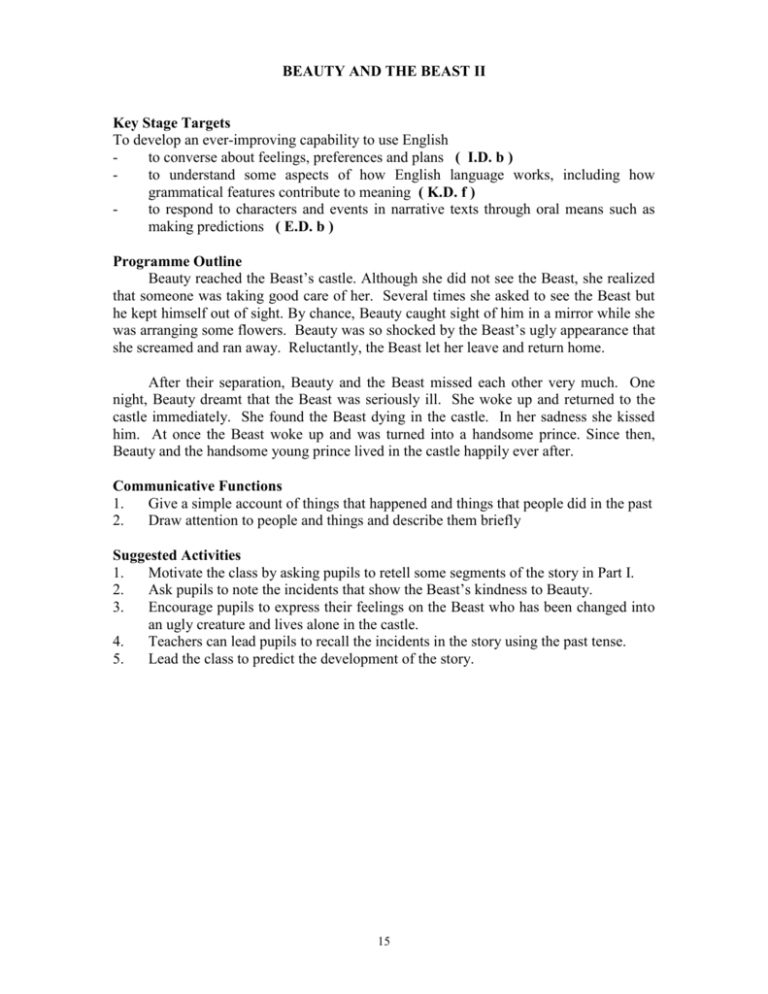
BEAUTY AND THE BEAST II Key Stage Targets To develop an ever-improving capability to use English to converse about feelings, preferences and plans ( I.D. b ) to understand some aspects of how English language works, including how grammatical features contribute to meaning ( K.D. f ) to respond to characters and events in narrative texts through oral means such as making predictions ( E.D. b ) Programme Outline Beauty reached the Beast’s castle. Although she did not see the Beast, she realized that someone was taking good care of her. Several times she asked to see the Beast but he kept himself out of sight. By chance, Beauty caught sight of him in a mirror while she was arranging some flowers. Beauty was so shocked by the Beast’s ugly appearance that she screamed and ran away. Reluctantly, the Beast let her leave and return home. After their separation, Beauty and the Beast missed each other very much. One night, Beauty dreamt that the Beast was seriously ill. She woke up and returned to the castle immediately. She found the Beast dying in the castle. In her sadness she kissed him. At once the Beast woke up and was turned into a handsome prince. Since then, Beauty and the handsome young prince lived in the castle happily ever after. Communicative Functions 1. Give a simple account of things that happened and things that people did in the past 2. Draw attention to people and things and describe them briefly Suggested Activities 1. Motivate the class by asking pupils to retell some segments of the story in Part I. 2. Ask pupils to note the incidents that show the Beast’s kindness to Beauty. 3. Encourage pupils to express their feelings on the Beast who has been changed into an ugly creature and lives alone in the castle. 4. Teachers can lead pupils to recall the incidents in the story using the past tense. 5. Lead the class to predict the development of the story. 15
